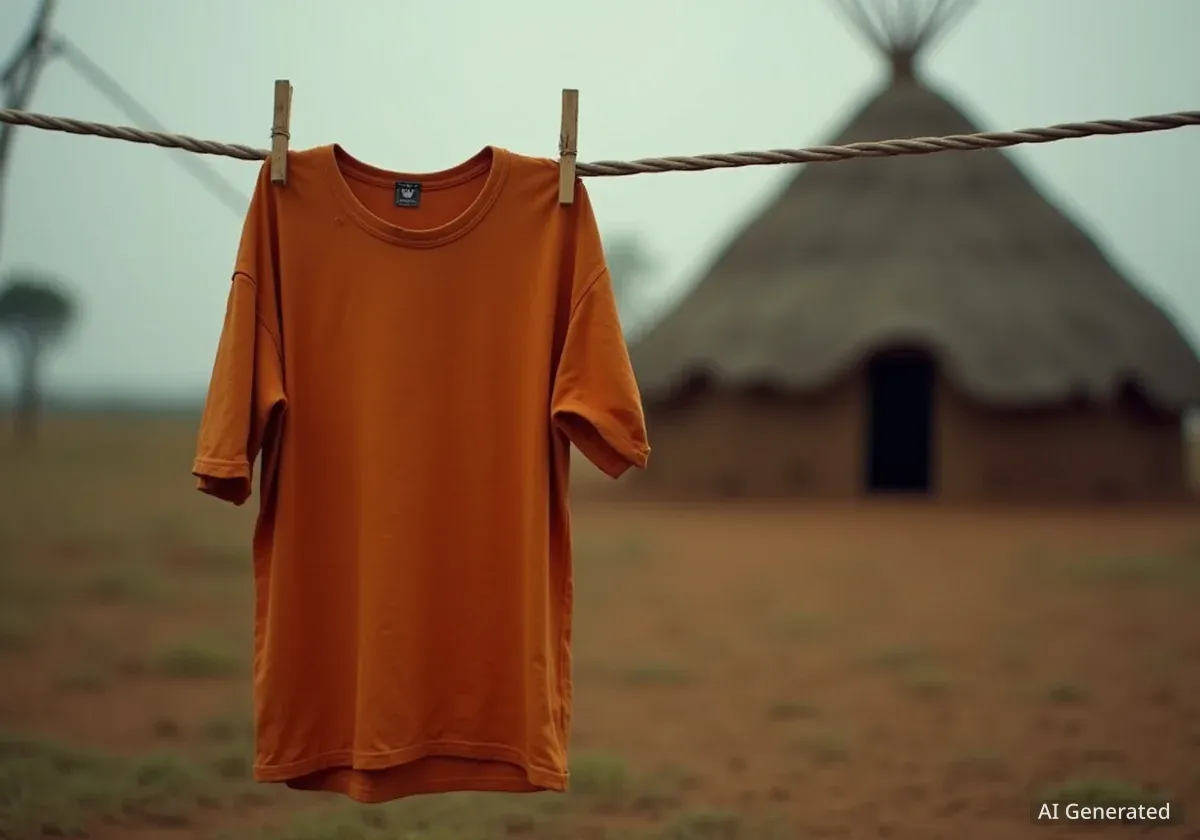On September 30, many people across the United States and Canada wear orange shirts to observe Orange Shirt Day. This annual event serves as a powerful memorial to the thousands of Indigenous children who were forced into residential and boarding schools, honoring both the survivors and the many who never returned home.
Key Takeaways
- Orange Shirt Day is observed annually on September 30 to honor victims and survivors of Indian residential and boarding schools.
- The movement was inspired by the story of Phyllis Webstad, a residential school survivor whose new orange shirt was taken from her on her first day.
- The central message of the day is "Every Child Matters," promoting awareness and reconciliation.
- These government and church-run schools operated for over a century in both the U.S. and Canada with the goal of forced assimilation.
The Origin of Orange Shirt Day
The story behind Orange Shirt Day begins with one child's experience. Phyllis Webstad, a member of the Stswecem'c Xgat'tem First Nation, was just six years old when she was sent to St. Joseph's Mission Residential School in British Columbia, Canada.
Excited for her first day of school, her grandmother bought her a new, bright orange shirt. Upon her arrival, school officials stripped her of her clothes, including the new shirt. It was never returned to her.
A Symbol of Loss
For Webstad, the orange shirt came to symbolize the losses experienced by Indigenous children in these institutions: the loss of culture, family, language, and self-worth. Her story, first shared in 2013, became the catalyst for the Orange Shirt Day movement, with the color orange now representing the stripping away of identity that occurred in these schools.
The date, September 30, was chosen because it was the time of year when Indigenous children were historically taken from their homes and sent to these schools. It is a day for reflection, education, and commitment to reconciliation.
The Message: Every Child Matters
The core principle of Orange Shirt Day is encapsulated in the phrase "Every Child Matters." This simple yet profound statement affirms the value and rights of all children. It serves as a response to a system that treated Indigenous children as less than human.
"It is a truly significant day to honor all of our children – past, present, and future," said Rosalind Cleveland in a statement regarding a commemoration in Black River Falls, Wisconsin. "Although our children suffered in the past, we are still here, standing strong and striving forward today."
According to the official Orange Shirt Society, wearing an orange shirt is a public commitment to this truth. It is a visual pledge to remember the past, honor the survivors, and work towards a future where every child is safe, respected, and cherished.
A Painful History of Boarding Schools
To understand the significance of Orange Shirt Day, it is essential to understand the history of the Indian residential and boarding school systems in both Canada and the United States. For more than a century, these institutions were operated by governments and religious organizations with the explicit goal of forced assimilation.
The System in Canada
In Canada, the residential school system operated from the late 19th century until the last school closed in 1996. Over 150,000 First Nations, Métis, and Inuit children were forced to attend. The 2015 final report from the Truth and Reconciliation Commission of Canada called the system an act of "cultural genocide." The report documented widespread physical, emotional, and sexual abuse, as well as malnutrition and disease.
Unmarked Graves
Since 2021, ground-penetrating radar has led to the discovery of more than 1,300 potential unmarked graves at the sites of former residential schools across Canada, confirming the oral histories of survivors about children who died and were buried without notice to their families.
The System in the United States
The U.S. had a similar system of federal Indian boarding schools. A 2022 report by the Department of the Interior identified 408 federal schools that operated across 37 states between 1819 and 1969. The investigation also identified marked or unmarked burial sites at more than 50 of these school locations, with the number expected to increase as research continues.
The stated mission of these schools was to "civilize" Native American children by erasing their languages, cultures, and spiritual beliefs. Children were often punished for speaking their native tongues and were forced to adopt Euro-American customs, names, and religions.
Observance and the Path to Reconciliation
Orange Shirt Day has grown from a local commemoration into a national movement. In Canada, September 30 is also recognized as the National Day for Truth and Reconciliation, a federal statutory holiday established in 2021. This designation elevates the day's importance, encouraging all Canadians to reflect on the legacy of the residential school system.
In the United States, recognition is also growing. Schools, community organizations, and tribal nations hold events to educate the public and honor those affected. These events often include:
- Public gatherings and marches
- Educational sessions in schools and workplaces
- Testimonies from survivors and their families
- Traditional ceremonies and moments of silence
The movement is not just about remembering a dark chapter of history. It is an active call for justice, healing, and meaningful reconciliation. For non-Indigenous people, it is an opportunity to listen to the stories of survivors, educate themselves about the lasting trauma inflicted upon generations of families, and become allies in the movement for Indigenous rights.
As communities across the continent continue to uncover the full truth of these institutions, Orange Shirt Day stands as a solemn promise to never forget the children who were lost and to ensure that every child matters from this day forward.


